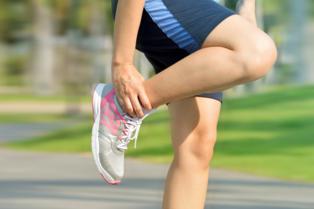
As beneficial as exercise and physical exertion can be, it is not without its risks. Today we are going to focus on one of the more common risks associated with physical exercise, and that is injury. The injury in question is a condition affecting the Achilles tendon, known as Achilles tendinitis. This injury/condition is especially common in athletes and physically active individuals, though in reality it can affect anybody, at any given time. But what is Achilles tendinitis, what causes it, and what are the symptoms?
What is Achilles Tendinitis?
Achilles tendon injuries can affect anybody, at any time. It doesn’t matter whether you’re a seasoned athlete, or simply somebody out walking the dog in the local park one day, Achilles tendon injuries are always a risk. The Achilles tendon is the biggest tendon in the human body. it is a springy bunch of connective tissue that connects the calf muscle to the bones of your heel. It is the tendon responsible for allowing you to walk, run, climb stairs, jump, stand on the tips of your toes, and more. Tendinitis is basically a condition where one of your tendons becomes swollen and inflamed. You see, inflammation is a natural response via the body, to help combat the ill-effects of illness, disease, or injury. Ordinarily, Achilles tendinitis is caused as a result of strenuous activity. This injury is very common in runners, and in athletes that utilize a lot of explosive speed.
What causes it?
Achilles tendinitis is generally not linked to any one specific type of exercise. It can be caused by virtually any form of physical exertion, at any time. However, runners that tend to push themselves too quickly, who try to cover greater distances than they are used to running, often causes the tendon to weaken, because the body has not yet adjusted to the increase in distance and pace. If your calf muscles are tight, this can also put more stress on the tendon, which in turn causes it to weaken. Typically, if you do something that requires you to slow down, speed up, and pivot, your Achilles is at risk because you are pushing all of your weight up off that very tendon. As an example, sprinters often suffer this injury at the start of a race, when they burst off of their starting blocks.
What are the symptoms?
The good news is that diagnosing Achilles tendinitis is not difficult. The most obvious symptom is a sharp, burning pain located just above your heel. Remember, Achilles tendinitis is not the same thing as a torn Achilles tendon, but it can weaken the tendon and make it more susceptible to becoming ripped or torn. Normally the condition begins with a dull ache or throbbing sensation located just above the heel, often after some form of physical activity. It may also feel very stiff and will gradually get worse as time goes by. Activities such as climbing stairs can also exasperate the pain.
Achilles Tendinitis Treatment
Treatment for Achilles Tendinitis requires restoring the circulation and blood flow to the affected structures in your Achilles tendon. Pain is caused when swelling and inflammation generate a blockage of circulation, which causes blood flow to be interrupted or slowed. Treatment for this issue requires breaking up the accumulated fluids in your Achilles tendon to allow for improved healing and quicker recovery.
Achilles Tendinitis treatment must aim at restoring circulation and blood flow to the injured area. When structures in the foot become injured, the swelling and inflammation generate a blockage, which causes blood flow and circulation to become restricted. Treatment requires restoring the blood flow and circulation through the Achilles tendon.
Products recommended for symptoms of swelling, redness, pain, and inflammation, and if coolness makes your pain feel better:
Ice Substitute Poultice
Bruise Relief Liniment
Muscle Therapy Massage Oil
Products recommended when swelling and inflammation are gone, but you still feel pain, stiffness, weakness, and/or sensitivity in cold and damp weather, and if heat makes your pain feel better:
Pain Relief Liniment
Tendon and Ligament Poultice
Muscle Therapy Massage Oil





